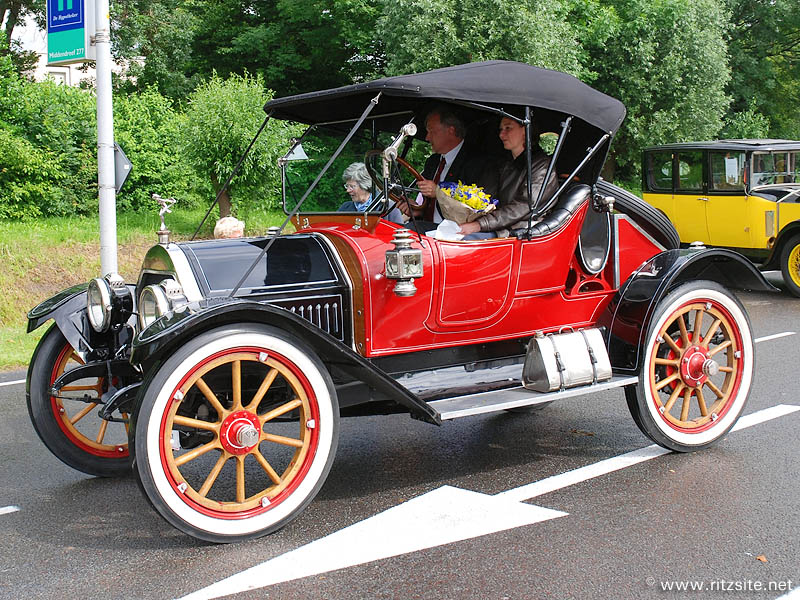|

Cartercar Model R - roadster body - model year 1912
One of the few innovations the Dutch car industry has provided was the Variomatic transmission used by all DAF cars. It was presented in 1958 and even after the end of DAF car production in 1975 this system has lived on as CVT (Continuous Variable Transmission) until this day. The Variomatic was an automatic transmission with a twist: instead of gears it used sets of pulleys driven by belts. By moving the rims of the pulleys closer together or further apart depending on speed and resistance the belt was forced into different positions within the pulleys, allowing for an infinite number of gears. It seemed like a stroke of genius; both simple and cheap to manufacture and lightweight as well, just what a small car needed. And as an important bonus the driver was always effortlessly supplied with the most optimal gear ratios.
Of course there were downsides to this system as well and it needed years of development to function properly. Actually, this type of transmission already had decades of development behind it before DAF introduced it and most of it had been done on the other side of the world, in the USA. Here it was Byron J. Carter who presented it in a rudimentary fashion on his Cartercar Model A in 1905. He named it friction drive and it was the unique selling point of all Cartercars.
Byron J. Carter had worked at the Jackson Automobile Company at the beginning of the 20th century before he decided to set out on his own with a friction drive car. At that time automatic transmissions were virtually unknown in cars so his new type of transmission received a lot of attention by the press and made it stand out from the abundant opposition. It was advertised as the car with "a thousand speeds" which was simple to run and cheap to maintain, as it had far less transmission components than traditional cars. Sales took off and the future for the Cartercar looked bright until Byron Carter suddenly died in 1908. In the wake of this tragedy the Cartercar company was snapped up by the rapidly expanding General Motors concern in 1909.
William Durant was the big promotor of General Motors and he saw an important future for the friction drive transmission. Before he could bring this vision to fruition he was ousted from General Motors in 1910. Still, Cartercar continued to produce nicely finished medium sized cars with friction drive. Unfortunately sales never lived up to expectations and did not exceed the 1000 units a year mark. Main reason for that was its price; Cartercars were about the size of the Ford Model T but could easily be twice as expensive in later years. The more luxurious finish and equipment and the friction drive couldn't make up for that on the market. By 1915 William Durant had returned to General Motors but it was too late to save Cartercar. Due to lack of profit and the competition of a number of other friction drive cars the Cartercar plant was closed in May 1915.
This was not the end for the friction drive however. It appeared on a wide variety of cars and other vehicles, mostly in the US but after 1945 also in Europe. DKW of Germany showed a scooter named the Hobby in 1955 which had a form of friction drive. Apparently Hub van Doorne, one of the founders of DAF, had been inspired to develop the Variomatic by watching the belt drive systems of his shop machinery but had also thoroughly examined the transmission of the DKW Hobby. So the Variomatic was not so much a revolution as it was an evolution. And like the Cartercar was the most famous and longest lived friction drive car in the first half of the century, the DAF was that in the second half.
Very few Cartercars are extant today, probably less than 30. That makes Model R shown here, with a 40 hp 4-cylinder engine and a 112 inch (284 cm) wheelbase, very rare. Even more unique is that this beautiful roadster is located in Europe. Wonderful to see this pristine example of automotive history in such a great shape.
© André Ritzinger, Amsterdam, Holland
|
